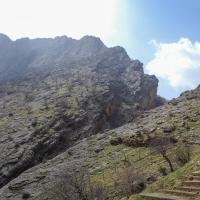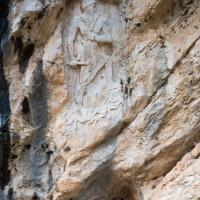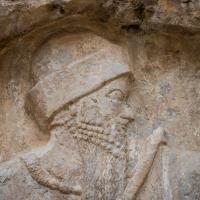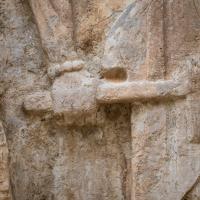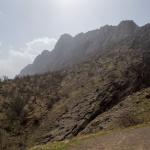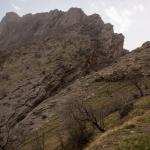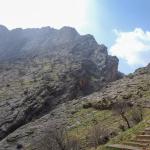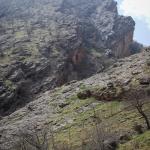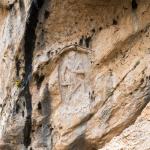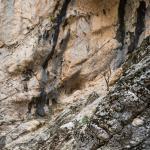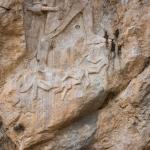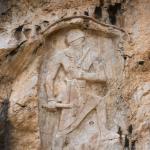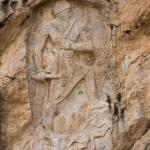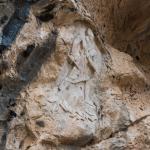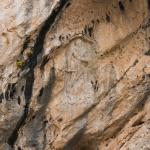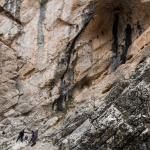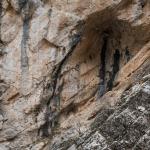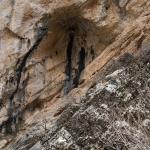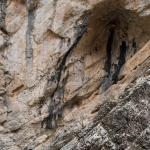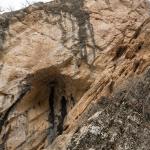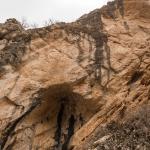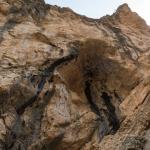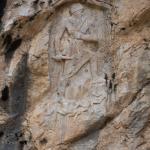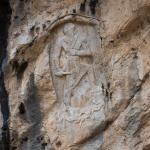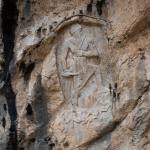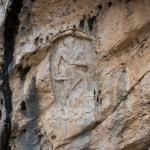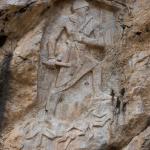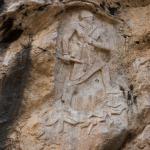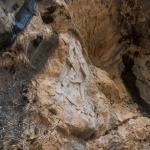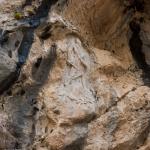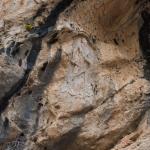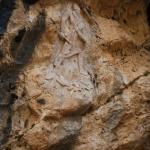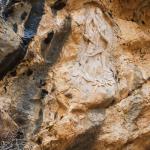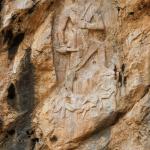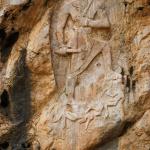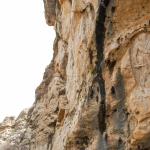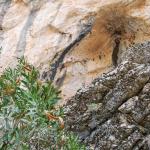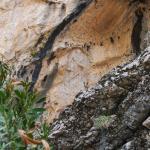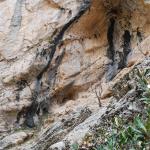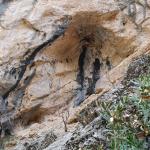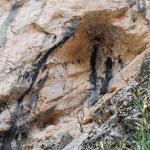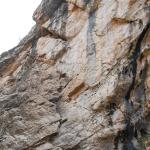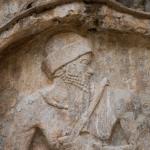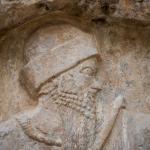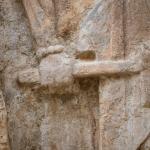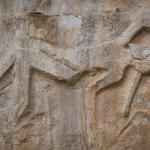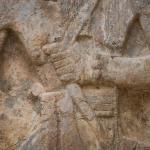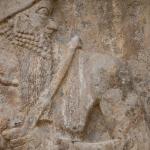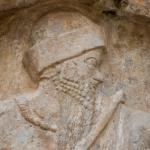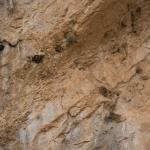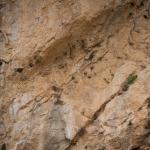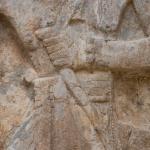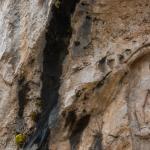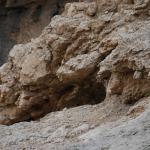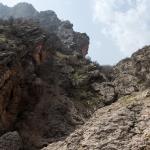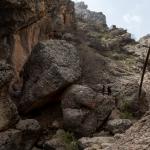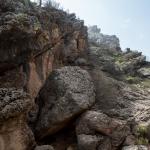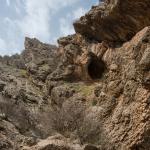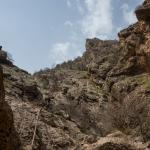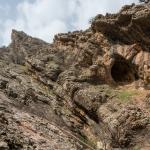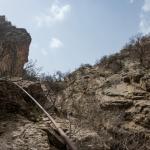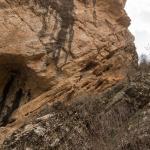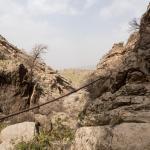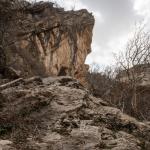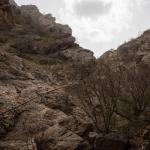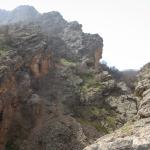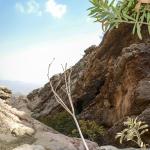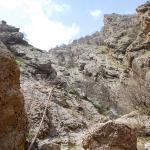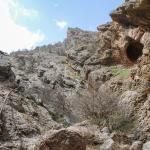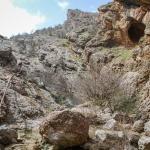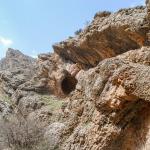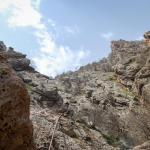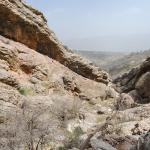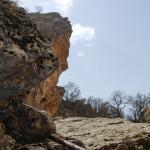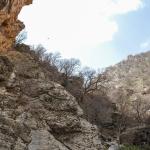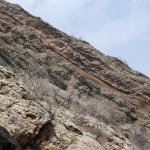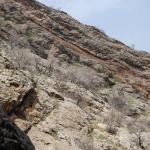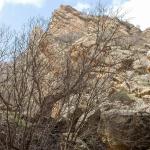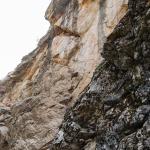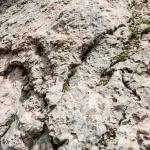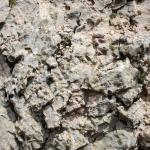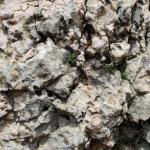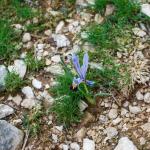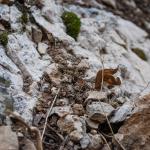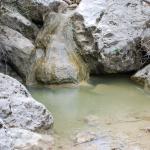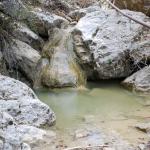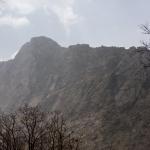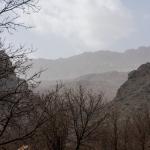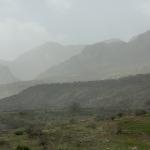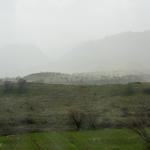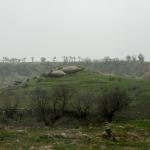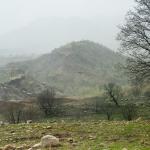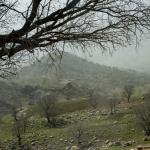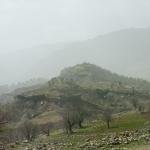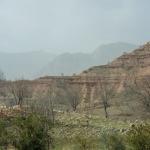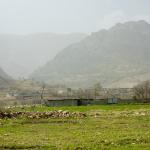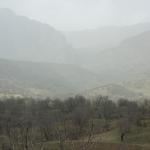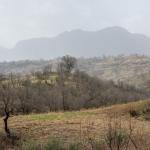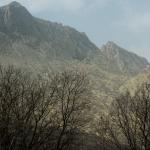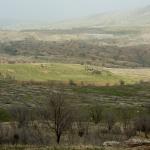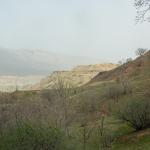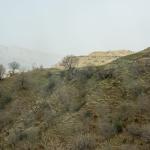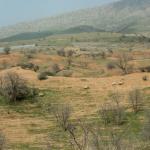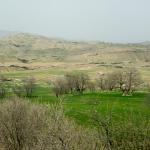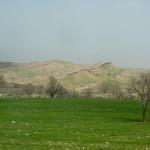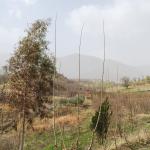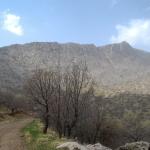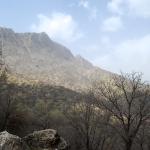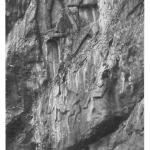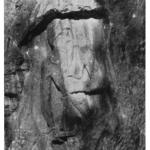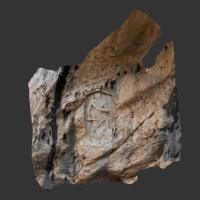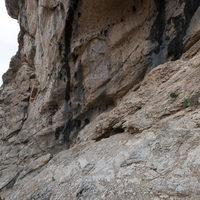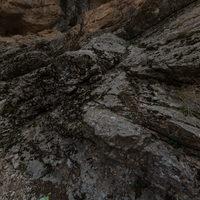Site Profile
This enormous rock relief is sited at Darband-i Gawr (“Pagan’s Pass”) within the Qara Dagh, one of the western ranges of the Zagros Mountains in Iraqi Kurdistan. Sited in a gorge created by a stream running down a steep hill, it was carved high up into a limestone cliff marked by sloping sedimentary layers (see the panorama). This gorge provides something of a pass through the mountain, but it is rocky and precipitous—an almost forbidding landscape remote from any major settlements. Although in earlier publications it was dated to Naramsin of Akkad, the relief, which depicts a triumphant ruler, is now dated on the basis of style to the Third Dynasty of Ur (late 3rd millennium BC).
Media
Description & Iconography
“Description & Iconography” general references: Debevoise 1942, 82–83; Strommenger 1963; Braun-Holzinger 2007, 149 (cat. AB 14); Marf Zamua 2007; Bahrani 2017, 170–172; Eppihimer 2019, 61–67.
History
Owing to its lack of an inscription, the date of the relief and the dynasty to which the depicted king belonged has been much discussed. Given its general similarity to the Naram-Sin stele, it was once taken as Akkadian; however, several iconographic features indicate a date significantly later in the millennium, within the period of the Ur III kings.1 This includes the type of cap and jewelry worn by the ruler, as well as the style of the beard, with curls near the face and wavy extensions falling below. For a number of reasons, many scholars have favored an attribution of the relief to the ruler Shulgi (r. 2094–2047 BC).2 However, this identification remains provisional given the current state of the evidence, and the possibility that it was carved by a local ruler also remains open. Supporting the idea of the representation of a local ruler, we can observe that the kings of the mountainous areas east of the Tigris were known to carve rock reliefs drawing on iconographic conventions of Mesopotamian kingship (as in the well-known group of carvings at Sarpol-i Zohab in modern Iran).
It is possible that like the Naram-Sin stele, the Darband-i Gawr relief was carved in reference to a particular battle as a commemorative monument; the Ur III kings (particularly Shulgi) did conduct campaigns in this region.3 Alternatively, a local ruler could be claiming victory over a neighboring foe. However, the relief’s lack of an inscription, among other factors, may point to a more general interpretation. Its iconography, its colossal scale, and its integration into the natural features of the landscape constructed an image of the king’s power as it extended into this rough and rocky terrain. The relief cannot be viewed simply as a propagandistic image, given its isolated location. Embedding the presence of the king in this awesome landscape in such a way as to transcend time, the image might be understood according to the philosophical concept of the sublime.4
- 1. As late as the 1960s, most scholars tended to date the relief to the Akkadian period, following the original suggestion of Sidney Smith (e.g. Strommenger 1963, 87–88). Boese (1973) was the first to argue systematically for the Ur III period, following the briefer proposal of Anton Moortgat. See the overview of the various attributions in Börker-Klähn 1982, 137–138.
- 2. Moortgat 1967, 74 and notes 255, 347; Boese 1973, 42–48; more recently, Eppihimer 2019, 65.
- 3. Boese 1973, 45–46; cf. Eppihimer 2019, 65.
- 4. Bahrani 2018, esp. 177–181.
Early Publications
In 1902, the archaeologist Vincent Scheil published a brief, second-hand description of the Darband-i Gawr relief.1 Since the gorge was already referred to as “Pagan’s Pass” by the time Scheil’s source noted the relief in 1895, it must have been long known to local people. In the early 1920s, Cecil J. Edmonds—who was at this date an officer in the British administration of Iraq—visited Darband-i Gawr, publishing his description and photographs of the relief in 1925.2 Among the scholars who studied the relief throughout the 20th century were Tariq Madhloom and Walid Yasin, providing analysis and photographs in the Arabic language section of Sumer in 1970.3
- 1. Scheil 1902, 14; see further Debevoise 1942, n. 18. The information was provided to Scheil by Emile Jacquerez, a French engineer working in the service of the Ottoman government; after traveling through the Mosul Vilayet in 1895, Jacquerez passed on his impression of a relief corresponding with the monument in question.
- 2. Edmonds 1925.
- 3. Madhloom and Yasin 1970, 347ff. and pls. 1–4. For a bibliography through 1982, see Börker-Klähn 1982, 137–138.
Selected Bibliography
Bahrani, Zainab. 2017. Art of Mesopotamia. New York: Thames & Hudson.
Bahrani, Zainab. 2018. “The Phenomenal Sublime: Time, Matter, Image in Mesopotamian Antiquity.” In Time in the History of Art: Temporality, Chronology, and Anachrony, edited by Dan Karlholm and Keith Moxey, 171–183. New York: Routledge.
Boese, Johannes. 1973. “Zur stilistischen und historischen Einordnung des Felsreliefs von Darband-i Gaur.” Studia Iranica 2: 3–48.
Börker-Klähn, Jutta. 1982. Altvorderasiatische Bildstelen und vergleichbare Felsreliefs. Baghdader Forschungen 4. Mainz am Rhein: P. von Zabern.
Braun-Holzinger, Eva A. 2007. Das Herrscherbild in Mesopotamien und Elam: Spätes 4. bis frühes 2. Jt. v. Chr. Münster: Ugarit-Verlag.
Debevoise, Neilson C. 1942. “The Rock Reliefs of Ancient Iran.” Journal of Near Eastern Studies 1 (1): 76–105.
Edmonds, Cecil J. 1925. “Two Ancient Monuments in Southern Kurdistan.” Geographical Journal 65 (1): 63–64.
Eppihimer, Melissa. 2019. Exemplars of Kingship: Art, Tradition, and the Legacy of the Akkadians. Oxford: Oxford University Press.
Madhloom, Tariq, and Walid Yasin. 1970. “Archaeological Excavations at Sulaimaniya Area.” Sumer 26: 347–359 (in Arabic).
Marf Zamua, Dlshad A. 2007. “The Rock Relief of Darband Gawr and the Analysis of the Artistic Evidences for Specifying Its Period.” Subartu 15 (in Kurdish).
Moortgat, Anton. 1967. Die Kunst des alten Mesopotamien: Die klassische Kunst Vorderasiens. Cologne: M. DuMont Schauberg.
Postgate, J. Nicholas, and Michael D. Roaf. 1997. “The Shaikhan Relief.” Al Rāfidān 18: 143–156.
Scheil, Vincent. 1902. Une saison de fouilles à Sippar. Mémoires publiés par les membres d’Institut français d’archéologie oriental du Caire 1. Cairo: Imprimerie de l’Institut français d’archéologie orientale.
Strommenger, Eva. 1963. “Das Felsrelief von Darband-i Gaur.” Baghdader Mitteilungen 2: 60–88.

